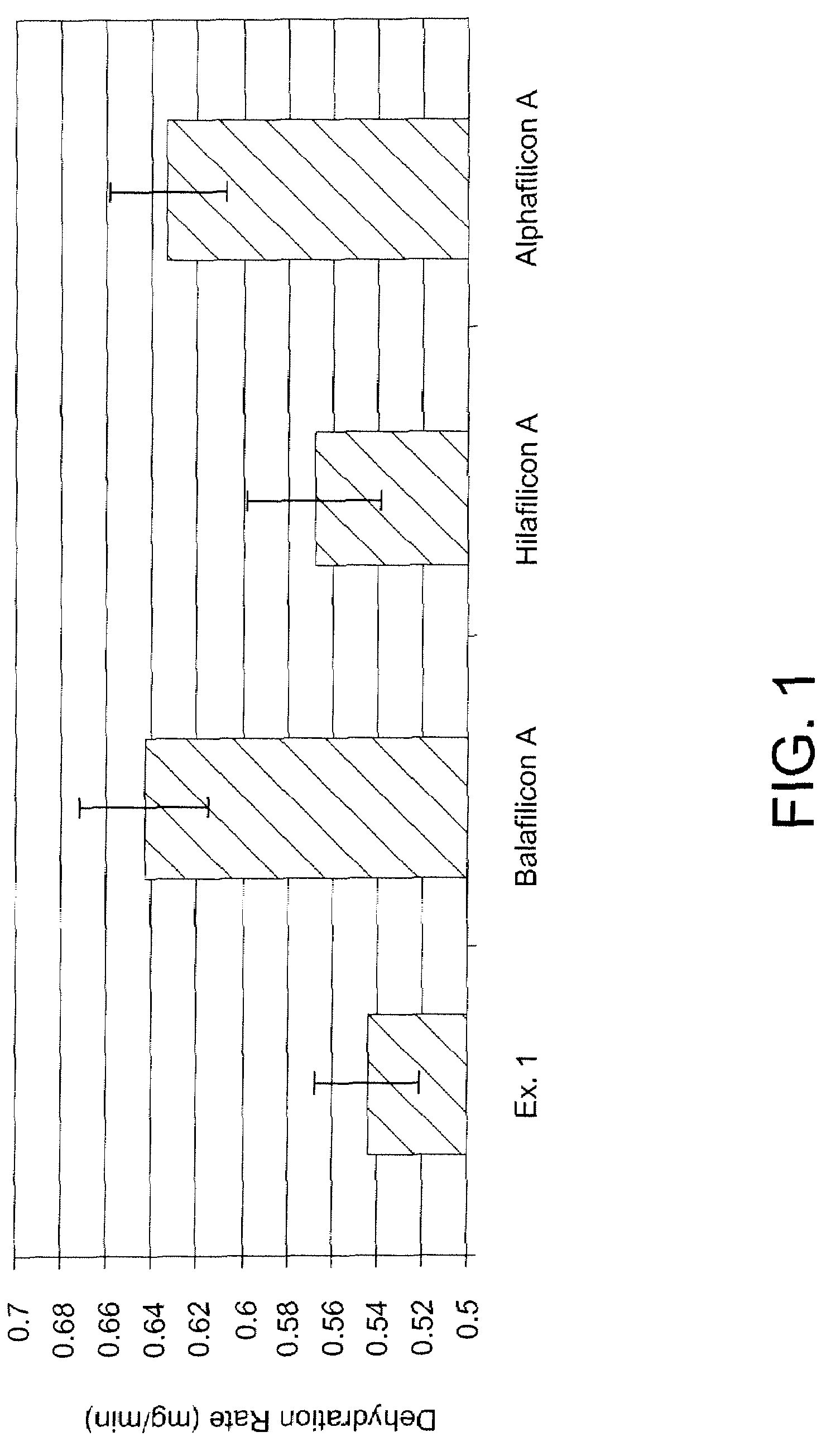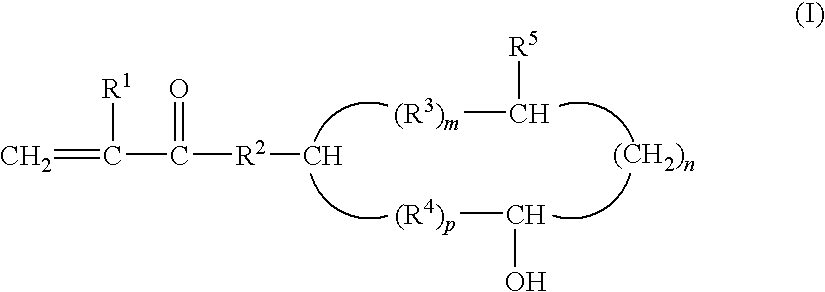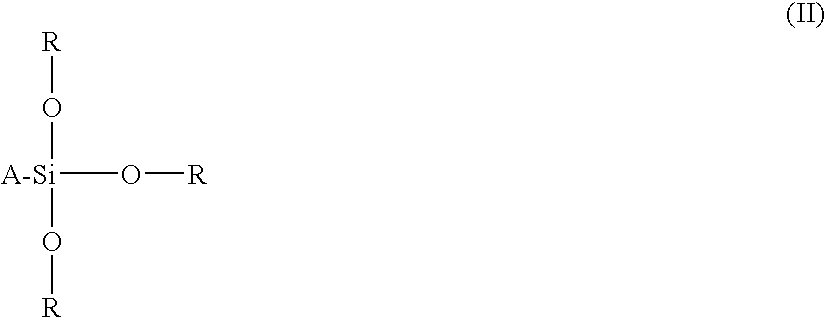High water content ophthalmic devices
a technology of ophthalmic devices and high water content, which is applied in the field of ophthalmic devices, can solve the problems of aggravated symptoms, lenses may not have one or more properties useful for providing comfortable and safe wearing of contact lenses, and onset of symptoms, so as to prevent or delay the appearance of one or more, inhibit the development and reduce the effect of evaporative corneal dehydration
- Summary
- Abstract
- Description
- Claims
- Application Information
AI Technical Summary
Benefits of technology
Problems solved by technology
Method used
Image
Examples
example 1
[0067]A monomer mixture was prepared by mixing the following components, N-vinyl-2-pyrrolidone (NVP) (90 weight percent); 4-t-butyl-2-hydroxycyclohexyl methacrylate (TBE) (10 weight percent), Pluronics® F127 dimethacrylate (HLB=22, Mw˜12600) (5 weight percent), ethylene glycol dimethacrylate (EGDMA) (0.15 weight percent), allyl methacrylate (AMA) (0.15 weight percent) and 2-hydroxypropylmethacrylate (HEMA) (2 weight percent) and a Vazo 64 initiator (0.5 weight percent). The monomeric mixture was cast in a polypropylene contact lens mold and thermally cured for about 4 hours. The resulting contact lens had an equilibrium water content (EWC) of approximately 82 wt. %, as calculated from the following equation:
[0068]((Wetweight(mg)-Dryweight(mg))Wetweight(mg))×100
[0069]The rate of evaporative dehydration for the contact lens was 0.544 mg / min. The rate of dehydration was determined from the slope of the initial linear region of the plot of weight (in mg) versus time as measu...
example 2
[0070]A monomer mixture was prepared by mixing the following components, NVP (90 weight percent); TBE (10 weight percent) and EGDMA (0.3 weight percent) and a Vazo 64 initiator (0.5 weight percent). To this mixture was added increasing amounts of O-(methacryloxyethyl)-N-(triethoxysilylpropyl)urethane (MTU) up to 15 weight percent. The monomeric mixture was cast in a polypropylene contact lens mold and thermally cured for about 4 hours. The resulting contact lens had an EWC of approximately 80 wt. %. The rate of evaporative dehydration for the contact lens was 0.416 mg / minute.
example 3
[0071]A monomer mixture was prepared by mixing the following components, NVP (90 weight percent); TBE (10 weight percent), EGDMA (0.3 weight percent) Pluronics® F127 dimethacrylate (DM) (HLB=22, Mw˜12600) (2 weight percent), and a Vazo 64 initiator (0.5 weight percent). The resultant monomeric mixture was cast in a polypropylene contact lens mold and thermally cured for about 4 hours. The resulting contact lens had an EWC of approximately 80 wt. %.
PUM
| Property | Measurement | Unit |
|---|---|---|
| temperature | aaaaa | aaaaa |
| weight percent | aaaaa | aaaaa |
| hydrophilic | aaaaa | aaaaa |
Abstract
Description
Claims
Application Information
 Login to View More
Login to View More - R&D
- Intellectual Property
- Life Sciences
- Materials
- Tech Scout
- Unparalleled Data Quality
- Higher Quality Content
- 60% Fewer Hallucinations
Browse by: Latest US Patents, China's latest patents, Technical Efficacy Thesaurus, Application Domain, Technology Topic, Popular Technical Reports.
© 2025 PatSnap. All rights reserved.Legal|Privacy policy|Modern Slavery Act Transparency Statement|Sitemap|About US| Contact US: help@patsnap.com



